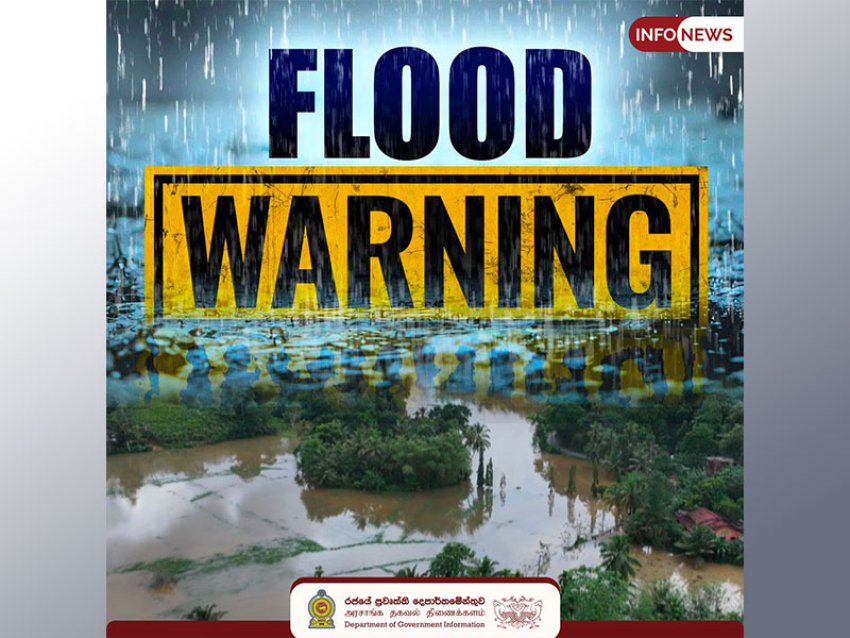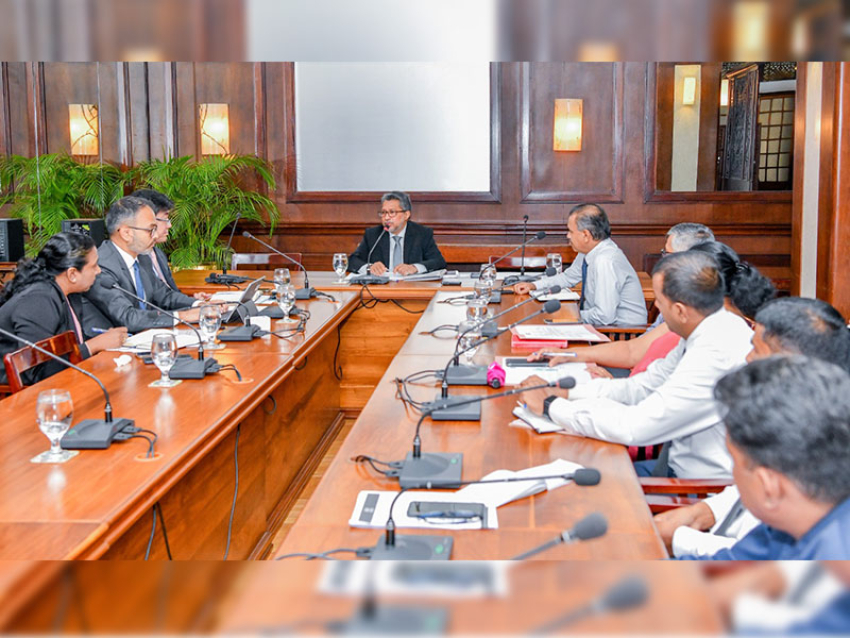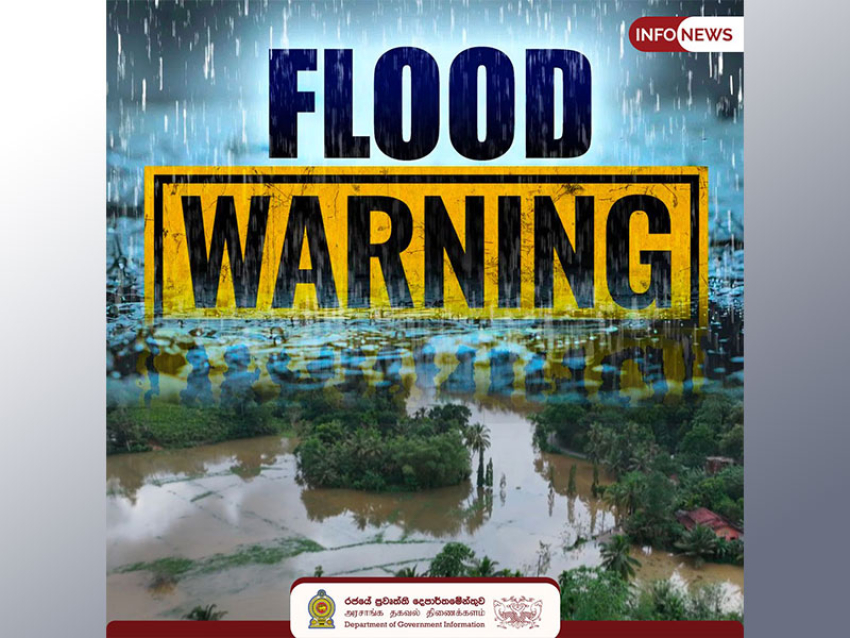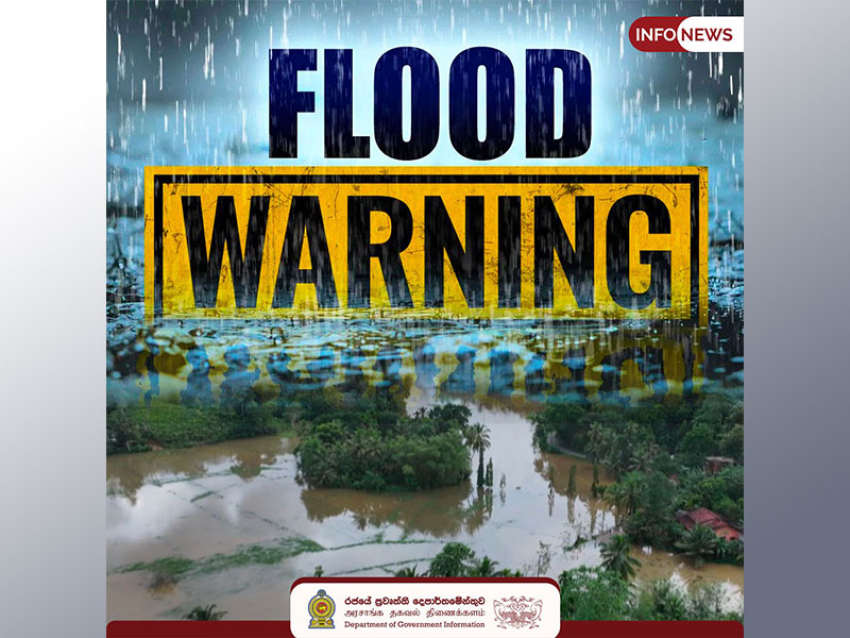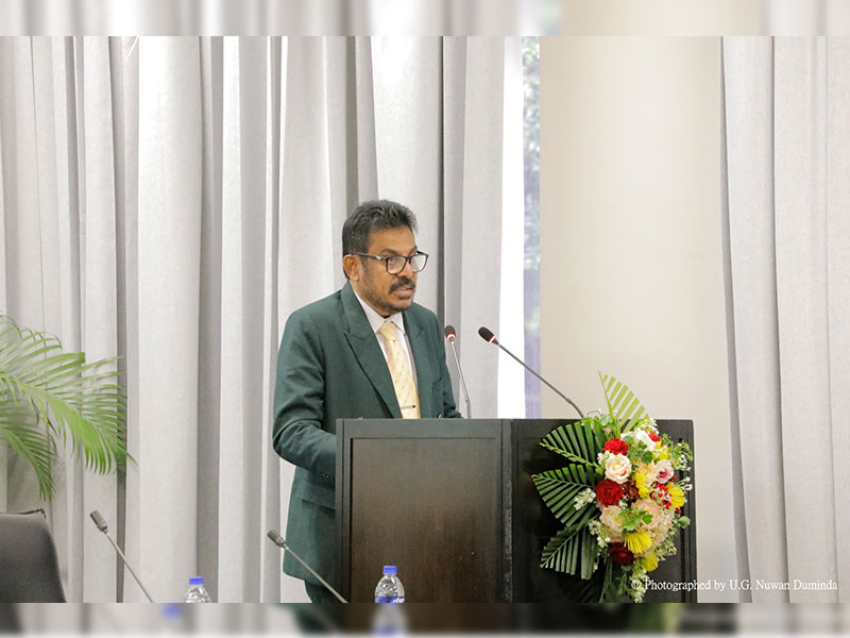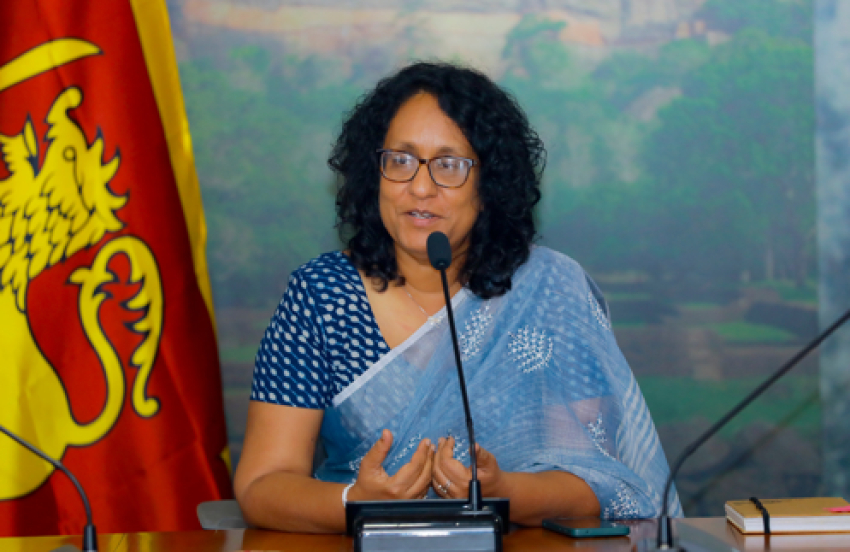The wall holding back a desert
There is a wall appearing across the African continent, dividing north and south. But this wall isn’t to keep migrants out, or to keep smuggled goods in check. It is holding back sand.
By Richard Gray
You have to watch where you step in Paga, on the very edge of northern Ghana. Wander into the wrong part of this dusty African border town and you may just come face to face with the toothy grin belonging to one of the resident crocodile population.The local people here have cultivated an alarmingly close relationship with these powerful reptiles, which live in “sacred” ponds around the town. According to local legend, the first chief of Paga was saved by a crocodile while on a hunting expedition and he decreed that none of his people would harm the animals from that day forward.
Today the locals still care for the crocodiles, feeding and protecting them. Women can apparently wash their clothes in the ponds without fear and some brave souls even swim with the animals. Tourists, drawn by the promise of “friendly” crocodiles, are encouraged to pose for gawky photographs while touching the reptiles. They are safe to approach, apparently, provided you do so from behind.
But Paga, and its crocodiles, face an encroaching threat from the land around it. Positioned on the southern edge of the semi-arid Sahel region that stretches across the African continent, Paga’s surrounding area is covered with a delicate, sandy soil that clings precariously to the landscape. Twisted trees and stunted shrubs, perfectly adapted to coping with the periods of drought that hit the area, help to hold the soil together.
But pressure from the growing population in Paga and the surrounding villages has led to many trees being cleared to provide fuel and building materials, and to make way for farmland. Without these to hold the soil together, wind and heavy rainstorms simply sweep it away, leaving nothing for crops and the wild vegetation to put its roots into. The land is turning into a desert.
“There is a lot of degradation in our environment because there's a lot of deforestation,” says Julius Awaregya, founder of a local environmental group in Paga. “It has serious implications for our future generations, so we need to conserve what we have.”Awaregya is now helping to coordinate efforts to keep the desert at bay by building, of all things, a wall. But this is no ordinary wall, made of brick, stone or concrete. It is instead formed from trunks, branches and leaves – a living, green barrier to hold back the near lifeless desert.On the day we speak, Awaregya had already dispatched members of his team to three nearby villages with truckloads of seedlings so they could join groups from the local community to plant new trees. Today they are planting acacia, mahogany, neem and, most importantly, baobab.
Fully grown baobab trees are a sight to behold. Their thick bulbous trunks, topped with a punk-rock bristle of stumpy limbs pointing skyward, have an other-worldly appearance. Baobabs – which are actually succulents – are perfectly adapted to the tough, dry conditions of the savannah and can live to be over 2,000 years old.
When the plants reach the still “youthful” age of about 200 years old they start to bear fruit – a green, prickly shell that hardens as it ripens on the branches in the sun to form a hard, smooth brown husk that contains a completely dry, off-white pulp that has a tart, citrus flavour. The saplings that Awaregya’s team are planting, therefore, are an investment for the future.
Although they seem unappetising, the villagers of Paga prize the fruit. Traditionally the ripened, dry fruit were collected by local women and cooked into a sauce or porridge or even a kind of candy.
But now this harvest is becoming far more organised. Every December to April, groups of women from the villages venture out into the bush with long sticks to collect the fruit from the trees. Those they bring back to their villages are sorted, cracked open, the desiccated pulp ground in a pestle and mortar or by machines.
The resulting powder is then bagged up and shipped to Europe where it finds its way into trendy smoothies, juices, ice creams and health foods. It is part of a $3.5bn (£2.87bn) global market for baobab, which is projected to exceed $5bn (£4.11bn) in the next five years.
It is a very special tree in Africa and has huge cultural value. In some places it is sacred – Andrew Hunt
Drawn by the high levels of vitamin C, calcium, magnesium, potassium and iron, companies such as Coca-Cola, Costco, Innocent Smoothies, Suja Juice and UK-based Yeo Valley have all released products containing baobab. It has brought new value to a tree that was largely seen as having little economic worth in places like Ghana
“Baobab has a lot of potential,” says Andrew Hunt, co founder and chief executive of Aduna, a health food brand that has been working with small scale baobab powder producers in Ghana and neighbouring Burkina Faso. “It is a very special tree in Africa and has huge cultural value – in some places it is sacred and local people see it as being home to ancestral spirits. But it had little economic value and was being cut down to make way for cash crops.”
Now with growing demand for baobab as a health food additive, the communities who live in the arid landscapes where they grow are seeing the rewards of protecting these unusual looking trees.
Aduna pays about 45 Ghanaian cedi (around $8/£6) for a 38kg bag of baobab fruit together with an organic premium that brings the total payment to around £10 ($12), according to Hunt. The average annual income in many of the villages is less than £40 ($48), so it makes a significant difference to the women who collect it. It also funded the planting of around 5,000 new baobab trees last year and is expecting to double that this year.
The scheme is helping to contribute to a far more ambitious project known as the Great Green Wall. It is attempting to grow an 8,000km (4,970 miles) barrier across the entire width of Africa to hold back the spread of the Sahara desert. While the desert waxes and wanes with the drought that comes with the changing seasons, declining rainfall combined with deforestation and soil degradation has seen it grow.
Over the past century, the Sahara desert has been expanding by more than 7,600sq km a year and is now 10% larger than it was in 1920. The creep has been particularly pronounced to the south, where it has spread into the Sahel by more than 554,000sq km over the same period. The desert now covers an area of 9.4 million sq km (3.6 million sq miles).
It is a picture that is being replicated elsewhere. The UN estimates that 120,000sq km of land are lost to desertification globally every year.
“Desertification [spreads] more like a cancer than a wave or forest fire,” explains Ibrahim Thiaw, executive secretary of the United Nations Convention to Combat Desertification (UNCCD). “The loss to the economy globally is estimated to be $1.3bn a day due to loss of agricultural lands, grazing for livestock, the loss of land that could be used for tourism and land used for human habitation.”
Launched in 2007 by the African Union, the Great Green Wall is a concerted attempt to slow and even reverse the spread of the world’s largest hot desert. Supported by the UNCCD, more than 20 countries across the Sahel are now planting trees to create what they claim will be the world’s largest living “structure”.
But this will be far from a glorified hedgerow stretching across the continent. Around $8bn (£6bn) has been invested in establishing new, sustainable land management practices and finding ways to improve soil quality. This has involved drawing on the knowledge of indigenous people to find local methods of caring for the land.
In Burkina Faso, Mali and Senegal, for example, farmers have been rehabilitating land by using zai, a traditional practice of building lines, stripes and semi-circles of stones that help to retain water during dry periods and allow it to soak into the hard soil. In other parts of Ghana, villagers have been planting elephant grass as a way of holding the soil together, while also using it to weave baskets.
Similar attempts at green walls around the Gobi desert in China have had limited success
But at the centre of the project are trees. Senegal alone has planted more than 12 million drought-resistant trees in just over a decade since the Great Green Wall was launched.
“About 30 million hectares (300,000sq km) of degraded land has been restored across 20 countries,” says Thiaw. “But we are only at the beginning of a long journey. I don’t think it will be complete in my children’s lifetime or even my own lifetime. We need to do much more and we need to do it at scale. Until now we have only been working with small projects led by pilot communities.”
The UNDCC has set the target of restoring 100 million hectares (1 million sq km) of land in Africa by 2030. It is an ambitious target but one they hope will bring greater food security to the Sahel by improving the soil for crops and at the same time help to draw millions of tons of carbon out of the atmosphere.
The success has been mixed though, and the initiative has been criticised for slow progress. Outside Africa, similar attempts by China to plant forest barriers to hold back the Gobi desert have also shown limited effects. Indeed, there are indications that dust storms from the Gobi may have increased rather than decreased.
But this is where the UNDCC hope the new global demand for baobab might help. While it is all very well asking local farmers to plant, protect and nurture trees, they will always compete with the need for food and income. But if the trees can help to produce income themselves, then there is a compelling reason for letting them grow and spread.
The UNDCC is hoping to do this by attracting the private sector into the Great Green Wall initiative. It is hoping that products like Baobab may encourage major multinational food companies to invest in the planting and harvesting schemes that are being set up in places like the villages around Paga.
“Governments cannot do this alone,” says Thiaw. “We need to engage the private sector so they can realise that it is profitable to restore land.” Later this year the UNDCC will launch the Great Green Wall Sourcing Challenge and is already talking to a number of major food corporations about getting involved.
And the potential extends beyond just baobab. The leaves of the moringa tree are also growing in popularity as a health food. Native to the arid sub-Himalayan areas of India, Pakistan and Afghanistan, it is well suited to growing in conditions found in many parts of the Sahel. Shea butter, popular in cosmetics and moisturisers, comes from the nut of trees that also grow in the region.
Andrew Hunt from Aduna also sees promise in grass crops that are traditionally grown in West Africa such as fonio, a type of millet that can be made into a cous cous-like product and could give other trendy grains such as quinoa some tough competition.
“Baobab is just one ingredient in a much bigger picture,” says Hunt.
But there are some who have concerns about what might happen if large multinational companies and food manufacturers start creating a wider demand for these crops. While it can bring valuable income and investment into an area, there is also a danger of over exploitation or even the creation of new mono-crops, much like the vast palm oil plantations that now dominate large parts of southeast Asia, Central America and South America.
This might only exacerbate some of the problems that are driving desertification in the first place, warns Lindsay Stringer, an expert on land degradation and water at the University of Leeds in the UK.
“While desertification itself might occur at quite a local scale, the political and economic drivers of those decisions can be operating at much larger scales, in places far away from the actual sites of desertification,” she says. “It’s easy for people who aren’t in drylands to be totally unaware of what’s going on in the drylands as a result of their consumer behaviour.”
Strategies that provide multiple benefits may be more suitable, she says. Planting fruit trees – such as the desert date – can help to stabilise the soil, create shade and provide food for local people. Giving local people land rights can also help as it makes them more willing to invest in sustainable ways of managing the land.
“We need to change some of our human-created systems rather than just plant things to solve the desertification issue,” adds Stringer.
There are other approaches, too, that can have an impact. Solar energy, for example, can reduce the need for wood as fuel and so the need to cut down trees. The Moroccan city of Ouarzazate, often afflicted by desert storms on the opposite side of the Sahara, has been harnessing solar power to treat wastewater and then using this to irrigate the surrounding land.
In Burkina Faso, microbiologists like Forfana Barkissa are inoculating cowpea plants and acacia trees with different types of bacteria and fungi to see if they can help them become more resistant to drought and improve their growth.
Back in Paga, farmers are also trying to make biochar – charcoal used to improve soil fertility – from the straw and other crop waste left after harvest, which they can then churn back in to the earth.
For the women who harvest the baobab to be exported for sale in Europe and the US, there have been benefits too. Some of the village cooperatives have been able to get tricycles to make transporting the sacks full of baobab seeds through the bush easier.
Women are also becoming more empowered within their communities and more involved in decisions within their own households.
“Before, it was difficult for women to say they wanted to do things as they didn’t easily have access to income,” says Julius Awaregya. “Now they have their own income they are making decisions at the household level.”
The local communities too are changing. “They don’t burn the bush or set fires anymore,” adds Awaregya. “They have created their own community laws to protect the trees.”With more trees and better soil, it might mean the people of Paga and their crocodiles can live alongside each other for a good while longer.
Accessibility links
Skip to contentAccessibility Help
Sign in
News
Sport
Reel
Worklife
Travel
Future
More
Search the BBC
Search
Search the BBC
Future
What is BBC Future?
Latest
Best of..
NEW SERIES
Follow the Food
TOMORROW'S TRENDS
Future Now
(Credit: Ignacio Marin/ Institute)
Climate change Environment
The country disappearing under rising tides
Rising sea levels are making traditional ways of life impossible. Rural Bangladeshis are having to adapt to survive.
By William Park
2 September 2019
Bangladesh has been a vulnerable state for much of its short existence. People in this flood-prone country have coped with rising water levels with a combination of innovation, flexibility and resilience – but the extremes the environment is now throwing at them might be beyond anyone’s endurance.
As climate change accelerates, the pressures on rural Bangladeshis mount. Where previously people might have been able to move away for the worst of seasonal flooding, the regularity of waterlogging is making it impossible to farm. Crop varieties cannot cope with the saltwater, and career alternatives are limited.
You might also like:
The animals that will survive climate change
How to save a sinking island nation
Why the arctic is smouldering
What, then, can be done for the most vulnerable people; the rural rice farmers of Bangladesh?
Historically, people in Bangladesh had worked around seasonal flooding; farming for part of the year and retreating when water levels rose, or seeking work in the cities as land became unusable.
By the end of the century, however, sea levels are expected to rise along the Bangladesh coastline by up to 1.5m. And that will come with more extreme seasonal fluctuations in sea levels. Disastrous storms and unusually high tides currently occur once each decade, but could become as regular as three to 15 times each year by 2100.
As a result, rural Bangladeshis face a stark choice; change their way or life or seek employment and a home elsewhere.
“The climate is becoming more volatile so we are seeing higher frequency of migration,” says Joyce Chen, an economist at The Ohio State University. “Where in the past we see migration due to annual flooding, or river bank erosion, now we see saltwater intrusion more commonly which affects the environment long term. It makes it harder to grow crops because the land is permanently altered by the saline water.” In the past, he says, people could go to work in the city for a few months while the land was flooded and return when the flood had retreated. Now that is no longer possible. “People realise it is not viable to stay.”
For some, the saltwater offers an opportunity. Where rice might have once grown, shrimp farms are taking over – the saltwater providing the right environment to switch to aquaculture.
“When we look at people converting from agricultural production, households seem to maintain their production pretty well by switching to aquaculture,” says Chen. “They seem pretty resilient. But, the ways they are being resilient now need to be sustainable into the future. How sustainable will aquaculture be? If enough people convert and there is too much saline intrusion that could create new problems and distort the economy in ways people cannot predict.”
The art of re-routing water using earth walls to create artificial islands for farming is perhaps best-known as a Dutch initiative. People in Bangladesh have also taken to building polders, as they are known, to protect their farm land. However, tensions arise when some farmers want to protect their agricultural land, on which they are growing rice, from saltwater intrusion while neighbouring farmers might inundate their land with saltwater in order to start farming shrimp.
“Anecdotes suggest that building sea walls and structures to keep the seawater out may be creating problems more than helping in that it creates conflict,” says Chen. “There are groups that want to allow more saltwater in to convert from agriculture to aquaculture. It benefits those that want to convert but not everyone is doing so. The seawater and levees allow more control which in some cases worsens the salinity problem.”
Chen says there may now be 100,000 people migrating each year due to saltwater flooding, but it is hard to estimate accurately because the changing wider economy is also affecting migration. A strong economy in India attracts workers, too, who often seek construction or agricultural work.
Mobile phones are one way to keep track of where people are moving, Chen has found. There are around 145m Sim card connections in Bangladesh, accounting for 87% of the population, although people change sim cards often and some people keep multiple phones. The high penetration of mobiles in Bangladesh is due to much of the population being reliant on them for banking. Mobile banking allows one person to work in a city as a migrant sending money home. Previously you might have had to wait several months for them to return with cash.
“We see both types of migration going on in Bangladesh – better opportunities in cities attracting workers or, in the case of climate change, they are moving because changes in the environment are making it hard to make ends meet,” says Chen.
As a low-lying country, Bangladesh has always been a vulnerable area to changing sea levels, so adapting and migrating are not unusual demands. Chen says people in Bangladesh are on a good path of economic growth at the moment, but the volatile climate makes it hard to predict whether this growth will continue.
Some Bangladeshis have tried to adapt their crops to the new conditions, but with limited success. “We have heard a little about switching to types of crops that are more saline-tolerant but I don't think there are that many varieties that exist,” says Chen.
Researchers in China have suggested that they have developed saltwater-resistant strains of rice, but there is little peer-reviewed evidence that these strains are viable, and the water in which the crops were tested contained only 10% the concentration of salt found in seawater.
Migrants moving within Bangladesh are attracted to the larger cities which for the most part are on the coast. Chen warns that this still leaves many people vulnerable to the effects of rising sea levels. Those cities might become uninhabitable with rising tides and could result in many thousands of people needing to find homes elsewhere all at the same time.
Alternatively, some rural Bangladeshis are adapting their homes. “I have heard stories of a lot more people building their houses on stilts, or having retention ponds around farms,” says Chen. “I have heard some stories of schools moving onto boats so they can continue operating after flooding.”
Some migrants seeking work in Bangladesh’s cities find themselves picking through other people’s waste. Children and families can earn money by picking out recyclables. Large quantities of plastic waste, for example, wash into cities in flood water. The labour is hard, and the returns are small, but many workers might be faced with few alternatives.
With few opportunities facing unskilled labourers, finding work when reaching a new city can be hard. One problem facing those responsible for protecting migrant workers in Bangladesh is that those who are most vulnerable are the least able to relocate, Chen warns.
“The most vulnerable people might be stuck in place, says Chen. “People with greater means will be able to move out of vulnerable areas, but those worst affected might be stuck.”
“It will be hard to address the needs of those folks.”
For Chen, the next project involves looking at how migration is affecting the lives of the most vulnerable people in society – children. “There is some evidence that migration due to saline water inundation affects educational outcomes, food insecurity affects health, too,” says Chen.
For many, food insecurities result in a trade-off between personal health and the welfare of their livestock – some of the most valuable assets rural families own. “People talk constantly about how hard it is to get fresh water in Bangladesh – they call it sweet water,” says Chen. “And they have to save the sweet water for their livestock.”
While scientists might develop saltwater-resistant crops in time, and some Bangladeshis will find work in aquaculture, the more immediate concerns of health and safety – of survival – are a big motivator for migrants in Bangladesh. People will go where the water tastes sweetest.
How to save a sinking island nation
Weather-related events are estimated to displace 143 million people by 2050 – but rising seas are already threatening tiny tropical nations. Can anything be done to help them?
By Becky Alexis-Martin, James Dyke, Jonathan Turnbull and Stephanie Malin From The Conversation
The evidence of the climate crisis is now undeniable. But state responses to climate change often have social and political motivations, rather than addressing the realities of this threat.
There has been a backlash against this lack of impetus in recent times by groups such as Extinction Rebellion, which highlights the need for significant action by wealthy Global North states. These wealthy, industrialised nations – and about 100 corporations largely headquartered within them, according to one report – have been the largest drivers of climate change via fossil fuel emissions, while baulking at global agreements to provide meaningful climate aid to developing countries.
You might also like:
• The animals that will survive climate change
• Can oysters save Louisiana from disappearing under water?
• How brain biases prevent climate action
The idea of drowning or sinking islands has long existed as a way to describe future risks that small island states must confront. But the reality is that these threats affect life in such places today. Many small islands states have chosen to reintroduce previously unpopular resettlement and migration policies in the face of climate change.
This is the story of Kiritimati (pronounced Ki-ri-si-mas) in the mid-Pacific – the largest coral atoll in the world. A closer look at the story of this particular island sheds light on the issues facing those living in similar locations all around the world, and the inadequacy of current international policy.
Kiritimati has a dark past of British colonialism and nuclear weapons testing. It gained independence from the UK on 12 July 1979, when the Republic of Kiribati was established to govern a group of 33 islands that straddle the equator in the area. Now, a complex threat is appearing over the horizon.
Raised no more than two metres above sea level at its highest point, Kiritimati is one of the most climate vulnerable inhabited islands on the planet. It is at the centre of the world, yet most people could not pinpoint it on a map, and know little about the rich culture and traditions of its people.
This culture may be set to disappear. One in seven of all relocations in Kiribati – whether between islands or internationally – are attributed to environmental change. And a 2016 UN report has shown that half of households have already been affected by sea level rise on Kiritimati. Rising sea levels also pose challenges to the storage of nuclear waste on small island states – a hangover from their colonial past.
One in seven of all movements in Kiribati are attributed to environmental change
Those who have moved become climate change refugees: people who have been forced to leave their home due to the effects of severe climate events and to rebuild their lives in other places, having lost their culture, community, and decision-making power.
This problem will only intensify. Intensifying storms and weather-related events have displaced an average of 24.1 million people every year around the world since 2008, and the World Bank estimates that another 143 million people will be displaced by 2050 in just three regions: sub-Saharan Africa, South Asia and Latin America.
On Kiritimati, a few mechanisms have been created to help islanders. For example, the Kiribati government has implemented a programme, “Migration with Dignity”, with the aim of creating a skilled workforce able to find good employment abroad. The government has also purchased 6,000 acres on Fiji in 2014 to try and ensure food security as the environment changes.
New Zealand has also created an annual opportunity lottery called the Pacific Access Ballot. This lottery is presented as a way for 75 Kiribati citizens per year to resettle in New Zealand. But quotas are reportedly not being filled. Understandably, people do not want to leave their homes, families and lives.
The World Bank and the UN, meanwhile, have argued that Australia and New Zealand should improve mobility for seasonal workers and allow open migration for citizens of Kiritimati, in light of climate change affects. But seasonal work is often menial and offers few prospects for a better life.
While well-intentioned international policy is predominantly focused simply on relocation, rather than providing adaptive capacity and long-term support, these options still do not offer true self-determination for the people of Kiritimati. They tend to commodify people, reducing their relocation to reemployment plans.
Realistic and affordable strategies to reclaim and maintain the island’s land are needed to prevent migration from becoming a necessity
It also means that beneficial local projects, such as the new airport, a permanent housing programme and a new marine tourism strategy could soon become redundant. Realistic and affordable strategies to reclaim and maintain the island’s land are needed to prevent migration from becoming a necessity. (Learn about how a country can keep the sea at bay).
Rising up
Encouraging the population to migrate is of course the option with the lowest costs. But we should not fall into the trap of thinking it is the only option. We don’t need to allow this island to drown.
This is not just a human issue – abandoning this island to the sea would also eventually condemn a bird species found nowhere else on Earth, the bokikokiko or Kiritimati reed warbler, to global extinction. Other small island states whose existence is threatened by rising sea levels are also home to species at risk of extinction. The Marshall Islands, for example, are home to the coconut crab, which can only be hunted and eaten by the local inhabitants.
International aid could resolve many future problems and preserve this astonishing and beautiful place for humans, nonhuman animals and plants, but the lack of support from wealthy nations makes options like this difficult for residents of small island states to consider. Artificial islands have been created in Dubai – why not here? Many other hard engineering options exist, such as coastal fortification and land reclamation technologies. Such options could protect the homeland of the Kiritimati people while also enhancing the resilience of these places – if international aid were more readily and consistently available from the nations that have driven this climate crisis. (Read about Miami's fight against rising seas).
At the time of writing, there is neither an internationally recognised definition of the climate refugee, nor are they covered by the UN 1951 Refugee Convention. This maintains a protection gap, as environmental degradation is not defined as “persecution”. This is despite climate change arising largely due to the actions of industrialised nations, as well as their negligence in combating its stark consequences.
The UN Climate Action Summit on 23 September 2019 may begin to address some of these challenges. But for the millions of people who live in places that are threatened by climate change, the question is about environmental and climate justice. This question should be not just about whether climate change hazards are being addressed – but why those who want to continue to live on small island states often do not have the resources or autonomy to address climate change and other global challenges themselves.
Why the Arctic is smouldering
We know the Arctic is melting – but it’s also on fire. And these wildfires could transform the pace, and scope, of global warming in ways that could affect us all.
By Zoe Cormier
27 August 2019
The Arctic is transforming before our eyes: the ice caps are melting, the tree-line is shifting northwards, starving polar bears wander into cities. The region is warming twice as fast as the rest of the planet due to climate change, largely due to changes in albedo – the loss of sunlight-reflecting ice and snow, replaced by sunlight-absorbing ocean and soil. This is driving a dangerous positive feedback cycle where heating spirals into more heating.
And, now, the Arctic isn’t only losing its ice. It is being set ablaze.
Gargantuan forest fires in Siberia, which burned for more than three months, created a cloud of soot and ash as large as the countries that make up the entire European Union. More than four million hectares of Siberian taiga forest went up in flames, the Russian military were deployed, people across the region were choked by the smoke, and the cloud spread to Alaska and beyond. Fires have also raged in the boreal forests of Greenland, Alaska and Canada.
These are all the things we have been predicting for decades – Philip Higuera
Though images of blazing infernos in the Arctic Circle might be shocking to many, they come as little surprise to Philip Higuera, a fire ecologist at the University of Montana, in the US, who has been studying blazes in the Arctic for more than 20 years.
“I’m not surprised – these are all the things we have been predicting for decades,” he says.
You might also like:
The animals that will survive climate change
The poisons released by melting Arctic ice
Ten simple ways to act on climate change
Higuera and his team predicted in 2016, based on sophisticated computer modeling, that fires in the boreal forests and Arctic tundra would increase by up to four times by 2100.
A key tipping point, he says, is an average July temperature of 13.4C over a 30-year period. Much of the Alaskan tundra has been perilously close to this threshold between 1971 and 2000, making it particularly sensitive to a warming climate. The number of areas near to and exceeding this tipping point are likely to increase as the climate continues to warm in the coming decades, says Higuera.
“Across the circumpolar Arctic, the take-home message is that there are distinct thresholds above which you start to see the tundra burning – it’s like a binary switch,” says Higuera. “This threshold relationship is part of what makes the Arctic so sensitive: areas will stay below this threshold for years, off our radar for fire activity – and then all of a sudden with a change in temperature it will start to burn.”
Though fires are a natural component of all ecosystems, including in the far north – they foster biodiversity and facilitate nutrient cycling – to see them on this scale in the Arctic is unprecedented and highly unusual.
“It’s an indication of how much we humans are kicking the system,” says Higuera. “And changing [the] global climate is a very big kick to the system.”
Part of the reason for the explosion in fires is that this increased heat is drying the soil and melting the permafrost. But there are more surprising reasons, too – such as that the warming climate is leading to more lightning strikes, which are causing more forest fires.
Slow burn
“Working in the field in Alaska this summer in a hot and smoky environment, you could literally feel the impacts of a number of fires that were happening in different places all over the landscape,” says Sue Natali, associate scientist with the Woods Hole Research Center, a Massachusetts-based organisation that researches climate change science and solutions. “You could also see the long-term impacts of fires that had happened years beforehand. We were walking on ground that was literally collapsing as a result of permafrost thaw brought on by previous fires.”
If simmering permafrost isn’t surprising enough, this summer she saw something even more shocking.
“I worked in a wetland that had burned,” says Natali.
The fires are impacting entire ecosystems in the north. The air is polluted, droughts are endemic, and in response new assemblages of plants and trees are growing in unexpected places. A report last year found, for example, that warming in the Arctic, and attendant vegetation changes, have caused caribou populations to plummet by half – due to the animals being unable to locate their normal food sources of lichen.
Fires in the Arctic also have huge implications for the global climate. Boreal forests and Arctic tundra cover 33% of the global land surface, and hold an estimated 50% of the world’s soil carbon – more carbon than is stored in all the world’s vegetation, and equal in size to the amount of carbon in the atmosphere.
Because conditions in the north are so cold, microbial growth and decomposition are much slower than in the tropics, so carbon is stored in layers of permafrost rather than recycled back into the nutrient cycle through vegetation growth.
In other words, if the forests burn and tundra melts, we could dramatically increase the amount of carbon in our atmosphere – essentially rendering useless even the most coordinated global attempts to cut global emissions.
“The north is a vast, global refrigerator for carbon that has been stockpiled from the atmosphere,” explains biologist Merritt Turetsky of the University of Guelph, in Ontario, Canada. She specialises in studying how permafrost thaws – when solid land turns into a “big soupy mess”, as she describes it. Communities in the north have for years been documenting lopsided homes and crumbling roads.
Now, we are seeing that once solid ground itself burn. Fires on the peatland are dominated by flameless smouldering combustion, which move overland through the leaf litter at the snail’s pace of half a metre a week, rather than the speedy rate of 10km per hour in a forest fire.
“These aren’t flames licking up into the trees like in Bambi,” says Turetsky. “These are slow-moving edges of ignition that move through the moss, the leaf biomass, and everything else that has fallen onto the forest floor.”
These smouldering fires not only are ignited much more easily than fiery flames by lightning strikes – they also can persist through cold and wet conditions much longer, largely because the peat holds vast stores of the combustible gas methane. As the climate warms, northern soils and peat dry out, making smouldering fires much more likely.
In a research paper from 2015, Turetsky explains how smouldering fires are actually a much greater threat to the global climate. They burn for much longer, so they can transfer heat much deeper into the soil and permafrost, overall consuming twice as much carbon-rich fuel as normal fires.
“Unfortunately, there’s just no way you can send out a bomber plane with a belly full of water or fire retardant to put these out – the tools that fire managers have at their disposal to tackle these huge scale fire events are just ineffective when it comes to smouldering,” she says.
Even more disconcerting, rainfall doesn’t always help.
“You need a huge amount of precipitation to fall to put these out – but if you get just a moderate amount of rain, that often comes with lightning, which can just blow things up thanks to the methane in the peat, and just make it worse,” she says.
Sink to source
In a new study, Turetsky and others report that the boreal forests will switch from absorbing carbon from the atmosphere through photosynthesis and growth, and so acting as a carbon sink, to releasing their carbon through drying and burning, making them a carbon source.
In other words, rather than acting as a brake on climate change, by burning, the northern forests will dramatically exacerbate global heating.
Rather than acting as a brake on climate change, by burning, the northern forests will dramatically exacerbate global heating
Not all of the soil carbon is burned during a forest fire. Over time, “legacy carbon” builds up in the soil after repeated fires. But as fires in the boreal increase in size and severity in a warming climate, the likelihood of this “legacy carbon” being released to the atmosphere increases.
“The really bad news is that big fires can move through a landscape and tap into old carbon layers that had been removed from the atmosphere thousands of years ago,” explains Turetsky. “When 100,000-year-old carbon is released back to the atmosphere, that’s the stuff of true positive feedback. And while occasional fires are a natural part of the boreal forest, it’s not a regular feature of the Arctic further north – but it may be in the future. We’re dialling up the volume.”
If conceiving of fires in the Arctic wasn’t enough of a paradigm shift, an even greater psychological hurdle is understanding that much of the fire in the Arctic is actually underground.
“A better understanding of what is actually on fire in these ecosystems – the peat and the muck and the soil beneath the surface – might change the way people understand how the Arctic can go up in flames,” says Carly Philips, Kendall Fellow for Protecting Carbon in Alaska’s Boreal Forests at the Union of Concerned Scientists, a non-profit founded 50 years ago with the aim of using science to improve the health of people and the planet.
Capable of smouldering beneath the surface, these subterranean fires can persist through the winter and pop up in spring in completely unexpected locations. Hence their nickname: “zombie fires”. They’re neither dead nor alive.
Taken together, melting permafrost, methane release, drying peat, vanishing ice, simmering zombie fires and of course a warming climate are all combining into an unprecedented setting for dramatic changes in the Arctic.
In a 2018 study, Woods Hole’s Natali describes a field experiment that lasted from 2012 to 2016 in Siberia, where she and her colleagues scorched patches of earth to varying degrees and waited to see how easily larch seedlings would grow. By 2017, there were five times more larch seedlings in the moderately and highly scorched earth compared to other plots – implicating that in a landscape razed by forest fires, new species would increasingly flourish.
It could mean that the Arctic landscape shifts away from coniferous forests to become more dominated by leafy deciduous trees that are found further south.
“In the boreal zone, we are already seeing a proliferation of deciduous forest across the landscape as coniferous forest fails to return post fire,” says Turetsky. “The iconic structure of how we define the boreal itself might be changing.”
Global influence
Dramatic changes in the boreal and the Arctic will affect the entire planet in more ways than one.
“This is a global problem: fires in one region affect air quality in other parts of the world,” says Mark Parrington, a senior scientist at the Copernicus Atmosphere Monitoring Service (Cams) at the European Forest Fire Information System. Their monitoring has tracked plumes of smoke from Alaska reaching the Great Lakes; fires in Alberta causing red skies in Europe; a smoke plume from the Canadian Arctic reaching the European Arctic, and more.
This is a global problem: fires in one region affect air quality in other parts of the world – Mark Parrington
Parrington says we need look at where black particulates – soot – from these fires is falling back to earth to understand the impact on the global climate. If it is deposited onto snow and ice, this would decrease the albedo and lead to more sunlight and heat being absorbed – increasing warming. Cams have some data to address this question, but urgently need more, he says.
Beyond more research, what can be done? Is there any chance of stopping these fires from spreading? Higuera, for one, isn’t optimistic. “It’s just not in the realm of possibility to say we will stop fires like this from happening in the future,” he says. “It’s like trying to stop a hurricane.”
Even fighting individual fires is extremely challenging, thanks to the remote, vast nature of the area and its lack of infrastructure. But not every fire should be fought, experts say: instead, we need to turn our attention elsewhere.
“It’s not an effective use of funds to go out and put out every northern fire – it’s just not feasible,” says Turetsky. “The most important thing we can do is overall climate mitigation – and our chance to do that is not in 15 or 10 years’ time.
“It’s now.”



